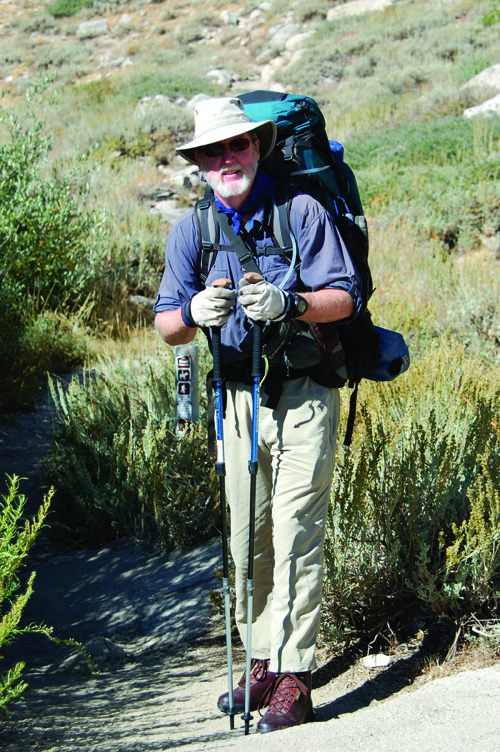Path of Enlightenment: William Tweed ’73
William Tweed ’73 MA (PhD ’75) spent two decades as a park ranger preserving the precious High Sierra and Sequoia forests. IN a new book, he reflects the parks’ enduring beauty and majestic strength.

William Tweed ’73 MA (PhD ’75) muses on the future of the nation’s park system in his new book Uncertain Path.
Path of Enlightenment: William Tweed ’73
William Tweed ’73 MA (PhD ’75) spent two decades as a park ranger preserving the precious High Sierra and Sequoia forests. IN a new book, he reflects the parks’ enduring beauty and majestic strength.
In the summer of 2006, William Tweed ’73 MA (PhD ’75) began a journey. He would eventually hike the rugged 200-plus miles of California’s John Muir and High Sierra trails, braving bears, altitude sickness, thunderstorms and the everyday aches and pains of an aging hiker while contemplating the future of the National Park system.
A longtime naturalist and historian who spent two decades at the Kings Canyon and Sequoia national parks, Tweed weaves together his personal journey of rediscovery with musings on the future of the nation’s park system in his new book Uncertain Path, (University of California Press).
Along the way, he recorded his thoughts, excerpted here from the book. And, like famed photographer Ansel Adams, he used his camera to capture the magnificent power of vistas that have survived millions of years of change.
In Uncertain Path, Tweed examines the inherent contradictions of designated wilderness — places defined by the absence of people yet managed for their use. His descriptions of trail building and maintenance using power tools, explosives and the occasional helicopter emphasize that trails are human-made. He ponders the difficulty of managing places idealized as natural and wild while also supporting substantial numbers of people — outdoor enthusiasts eager to escape civilization only to find crowded campsites and grid-locked trails.
As Tweed tackles remote segments of the trail, he also considers wilderness demographics, noting that virtually everyone he meets is a white Baby Boomer. He remembers his own youth, when, at age 16, his parents allowed him and a friend to head out for an extended backpacking trip in the back country.
“Today that adventure, which I look back on as an intoxicating taste of freedom, would be perceived by most as parental neglect or worse,” he notes.
Tweed also worries that current and future generations of young people are losing their connection to nature and the national parks, turning instead to technological gadgets.
 “In my last years working as a national parks manager, I began to see children watching television in the back of the car as their families toured the national parks. Apparently, neither parents, nor their children saw any reason why the young folk should even look out the window.”
“In my last years working as a national parks manager, I began to see children watching television in the back of the car as their families toured the national parks. Apparently, neither parents, nor their children saw any reason why the young folk should even look out the window.”
After journeying 240 miles in 30 days, he learned that just as an aging hiker must adapt to the reality of an aging body, the nation’s parks and wilderness areas will have to adapt to a changing world.
But as he ended his hike in the Giant Forest of Sequoia National Park, he found inspiration in the massive trees that have served as a symbol of America’s natural beauty.
“In a changing world, these unique places remain more valuable than ever. For more than a century, our national park system has helped define our nation, and in the early years of the 21st century, that role remains undiminished.
“I see the national park system as a key leader in meeting the challenges of us all in this new century. We must not lose the core values, authenticity, and public trust that have made the parks so special.”

Your comments are welcome
Comments
Related Reading:
Alumni, Features
CHEW to the Rescue
A desire to help dogs led Leigh Owen Sendra to launch a nonprofit veterinary clinic.
Alumni, Features
Finding a Fit
A Neeley alum matches workers on the autism spectrum to high-tech careers.